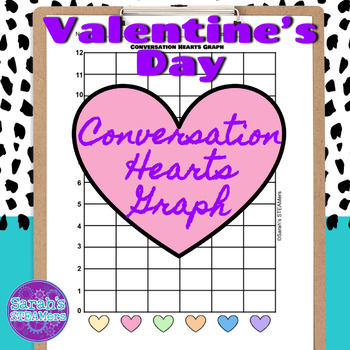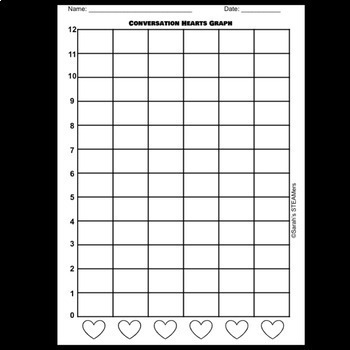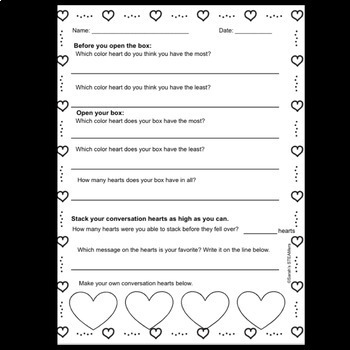Valentine's Day Conversation Hearts Graphing Activity
Sarah's STEAMers
799 Followers
Grade Levels
1st - 3rd
Subjects
Resource Type
Standards
CCSSK.MD.A.2
CCSSK.MD.B.3
CCSS1.MD.C.4
CCSS2.MD.D.10
CCSS3.MD.B.3
Formats Included
- PDF
- Easel Activity
Pages
5 pages
Sarah's STEAMers
799 Followers
Easel Activity Included
This resource includes a ready-to-use interactive activity students can complete on any device. Easel by TPT is free to use! Learn more.
What educators are saying
My students had a great time with this worksheet. They were so engaged with grouping and graphing candy hearts. They worked and compared with other classmates the amount of different colors they each had.
My students enjoyed the activity and I felt that not only were they enjoying Valentine's Day but were applying what we had been learning. Activity was engaging and great fun!
Description
What better way to incorporate math into your Valentine's Day than with a fun graphing snacktivity? This PDF contains a cover sheet, two graphs (one in color, one in B&W), and a question sheet. You can copy a graph and the question sheet back-to-back to save paper!
You might also like:
Total Pages
5 pages
Answer Key
N/A
Teaching Duration
30 minutes
Report this resource to TPT
Reported resources will be reviewed by our team. Report this resource to let us know if this resource violates TPT’s content guidelines.
Standards
to see state-specific standards (only available in the US).
CCSSK.MD.A.2
Directly compare two objects with a measurable attribute in common, to see which object has “more of”/“less of” the attribute, and describe the difference. For example, directly compare the heights of two children and describe one child as taller/shorter.
CCSSK.MD.B.3
Classify objects into given categories; count the numbers of objects in each category and sort the categories by count.
CCSS1.MD.C.4
Organize, represent, and interpret data with up to three categories; ask and answer questions about the total number of data points, how many in each category, and how many more or less are in one category than in another.
CCSS2.MD.D.10
Draw a picture graph and a bar graph (with single-unit scale) to represent a data set with up to four categories. Solve simple put-together, take-apart, and compare problems using information presented in a bar graph.
CCSS3.MD.B.3
Draw a scaled picture graph and a scaled bar graph to represent a data set with several categories. Solve one- and two-step “how many more” and “how many less” problems using information presented in scaled bar graphs. For example, draw a bar graph in which each square in the bar graph might represent 5 pets.






